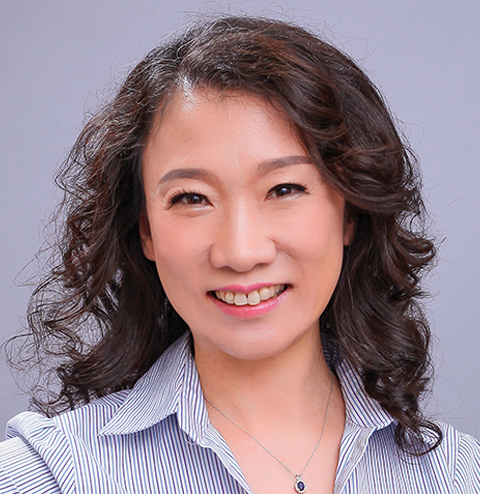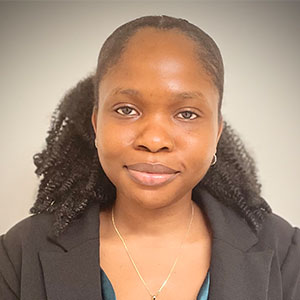
From virology to immunology, Wu focuses on structure
At a 1987 scientific conference in Beijing, Hao Wu, then a medical student in Peking, heard the physicist and microbiologist Michael Rossmann deliver a talk on the crystal structure of human rhinovirus. “I was captivated by the potential of crystallography to solve large viral structures and answer complex biological questions,” Wu said.
Wu opted to leave medical school and the immunology lab she’d been working in. Instead, she earned a Ph.D. in biochemistry in Rossmann’s lab at Purdue University, where she worked on solving the structure of human parvovirus and cauliflower mosaic virus.

Although she transitioned into structural virology, Wu never truly left immunology behind; she studied the structure of the glycoprotein CD4 during her postdoctoral work. When she established her own laboratory, she focused on structures of signaling proteins in the pathway for the tumor necrosis factor receptor superfamily.
The shift from structural virology to structural immunology presented challenges, including the need to establish collaborations with biologists who were already engaged with others in the field. This transition coincided with a busy time in Wu’s personal life; she was a mother of two young children. Balancing her work in the lab with her responsibilities at home required careful time management.
“I had to categorize my tasks based on what I needed to do in the lab or not, get those tasks done and head home,” she said.
Wu now leads a structural and mechanistic immunology laboratory in the cellular and molecular medicine program at Boston Children’s Hospital and the biological chemistry and molecular pharmacology department at Harvard Medical School.
Timothy Springer, a professor at Harvard Medical School and Boston Children’s Hospital, nominated Wu for the American Society for Biochemistry and Molecular Biology’s 2024 Bert and Natalie Vallee Award in Biomedical Science for her outstanding accomplishments in basic biomedical research.
“Her studies not only provided important biological insights but also illustrated a new way of signal transduction by oligomerization as well as a new approach to study these complexes by a multitude of combined methods,” Springer wrote.
Wu advises early-career scientists, “Identify your goals, focus, and pursue them relentlessly.”
Therapeutics: the future of structural biology
Hao Wu likens structural biology to molecular anatomy, with the potential to revolutionize immunology and therapeutics development. Throughout her career, she has tackled structures of signaling proteins in the pathway for the tumor necrosis factor receptor superfamily, the Toll-like receptor/interleukin-1 receptor superfamily, and inflammasomes, and increased understanding of their roles in innate immunity.
“The pathway I study is a major player in innate immunity and holds relevance for aging, neurodegeneration, and host innate immunity,” Wu said.
She emphasized the importance of understanding the signaling molecules in detail: “We must decipher their roles to strike a balance between necessary immune responses and harmful hyperactivation and inflammation.”
Wu’s vision for structural biology includes the ability to solve the structure of any cellular complex using cryo-electron microscopy. AlphaFold and other advanced technologies have revolutionized access to structural information, she noted; however, classical structural biologists must take the process a step further by harnessing artificial intelligence and biochemical tools to delve deeper into molecular assemblies.
“I find my journey to be nothing short of exciting,” Wu said, and she looks forward to witnessing the progress in therapeutics that structural biology can facilitate.
2024 ASBMB award winners
Phillips turns parasite’s metabolic weakness into hope for human health
Herbert Tabor Research Award: Margaret Phillips
Ando's pioneering journey: From physics to structural enzymology
Mildred Cohn Young Investigator Award: Nozomi Ando
Stoddard changes mentoring practices in academia
Ruth Kirschstein Diversity in Science Award: Shana Stoddard
For Wolfson, every classroom is a laboratory
ASBMB Sustained Leadership Award: Adele Wolfson
Kennelly considers his fortune of three careers
William C. Rose Award for Exemplary Contributions to Education: Peter Kennelly
Balla leaves no phosphoinositide unturned
Avanti Award in Lipids: Tamas Balla
Stillman charts the path of genome replication
Earl And Thressa Stadtman Distinguished Scientist Award: Bruce Stillman
In failure, Simcox finds a way to learn
Walter A. Shaw Young Investigator in Lipid Research Award: Judith Simcox
Roos’ career pivot to maximize impact
Alice and C.C. Wang Award in Molecular Parasitology: David S. Roos
Enjoy reading ASBMB Today?
Become a member to receive the print edition four times a year and the digital edition monthly.
Learn moreGet the latest from ASBMB Today
Enter your email address, and we’ll send you a weekly email with recent articles, interviews and more.
Latest in People
People highlights or most popular articles

Mydy named Purdue assistant professor
Her lab will focus on protein structure and function, enzyme mechanisms and plant natural product biosynthesis, working to characterize and engineer plant natural products for therapeutic and agricultural applications.

In memoriam: Michael J. Chamberlin
He discovered RNA polymerase and was an ASBMB member for nearly 60 years.

Building the blueprint to block HIV
Wesley Sundquist will present his work on the HIV capsid and revolutionary drug, Lenacapavir, at the ASBMB Annual Meeting, March 7–10, in Maryland.

In memoriam: Alan G. Goodridge
He made pioneering discoveries on lipid metabolism and was an ASBMB member since 1971.

Alrubaye wins research and teaching awards
He was honored at the NACTA 2025 conference for the Educator Award and at the U of A State and National Awards reception for the Faculty Gold Medal.

Designing life’s building blocks with AI
Tanja Kortemme, a professor at the University of California, San Francisco, will discuss her research using computational biology to engineer proteins at the 2026 ASBMB Annual Meeting.

